Marvelous Mushrooms
[gallery ids="13399,13400,13401,13402,13403,13404" type="slideshow" orderby="rand"]
Fairy rings, toad stools, legendary poisons and delectable dinners, mushrooms give us so much. More than we give them credit for, actually. Fungus break down dead things and add nutrients back into the soil, making life a lot more pleasant than it would without decay. Fairy rings are actually a pattern created by saprophytic mushrooms feeding on hidden, decaying tree roots. So what seems like a mysterious symbol of the Fair Folk has a prosaic scientific explanation at the root of it.
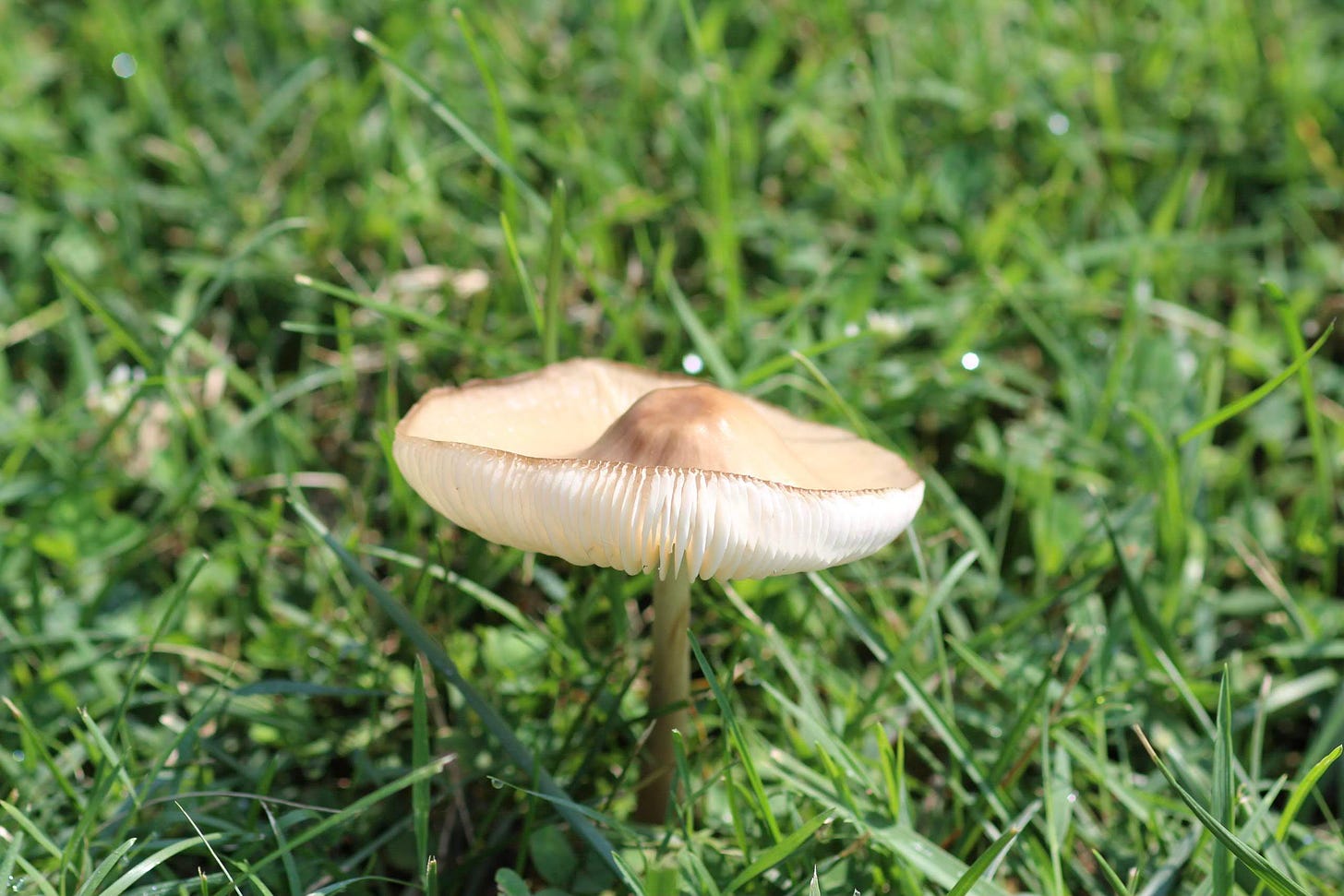
Fairy rings are actually saprophytic mushrooms
I'm still, after all these years, a mushroom novice. There are a lot of ways to go wrong with mushroom identification, so I have a bare handful of species I'm willing to gather and feed to myself and my family. Even 'edible' species can be dangerous, like the Inky Cap (Coprinopsis atramentaria) which causes serious illness when combined with alcohol. Or the Angel Wings (Pleurocybella porrigens) which is closely related to the Oyster Mushroom, but which can destroy the kidney function of people who have a certain genetic quirk. Which you won't know until you've eaten it and fall ill. So I always handle fungus (if I touch them at all) with the utmost caution.
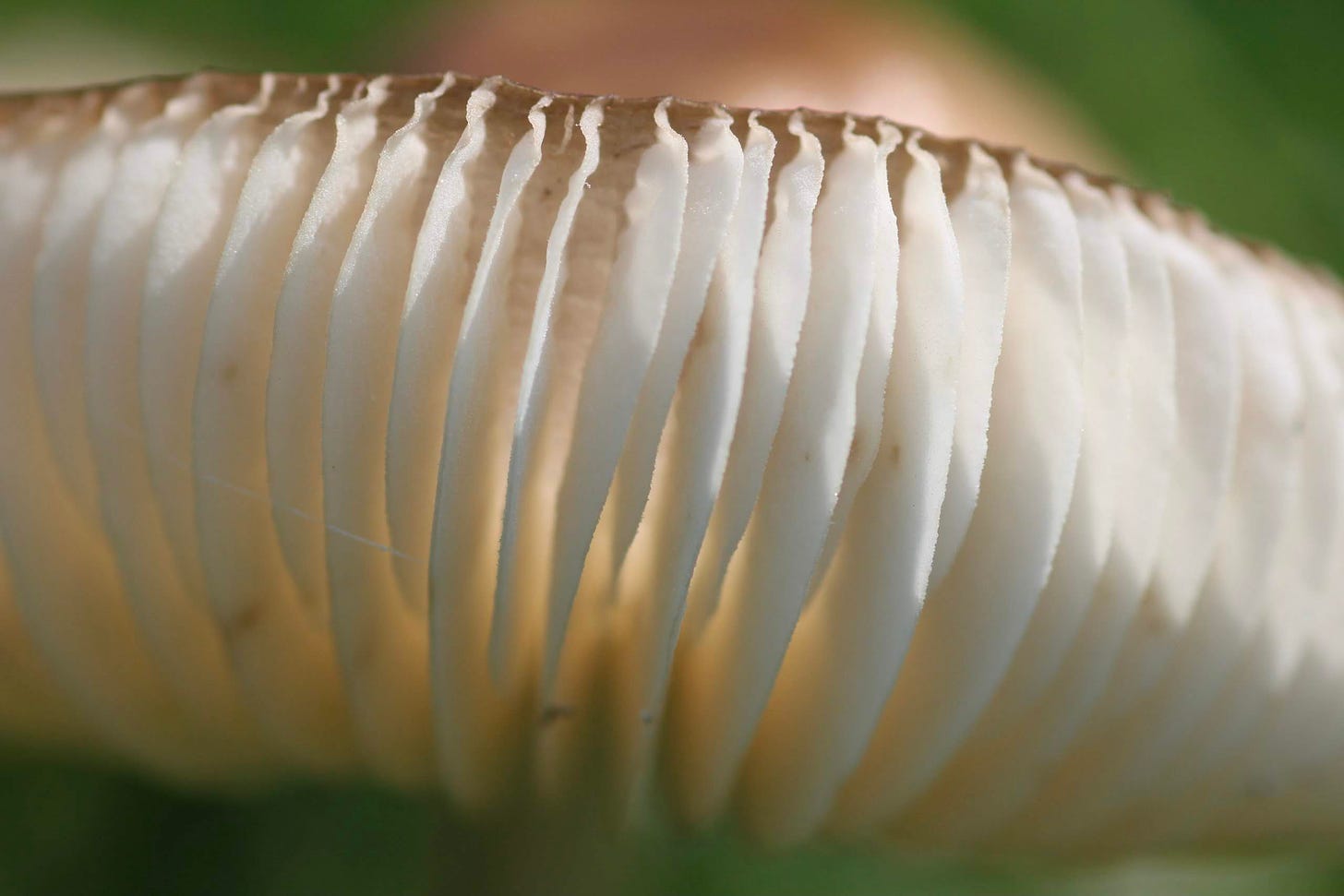
Gills coated with the tiny spores sparkle just a little
Identification of mushrooms can be difficult, but there are a few key features to pay attention to. The size and shape of the 'cap' if it has one. Color, not only the obvious color of the top, but the color of the underneath, the color on bruising, the color of spores... Spore prints are actually a fun project to do with kids, too. I highly recommend finding a good mushroom book - Paul Stametes books are excellent - but also finding people in your local area who know what they are looking at, if you can.
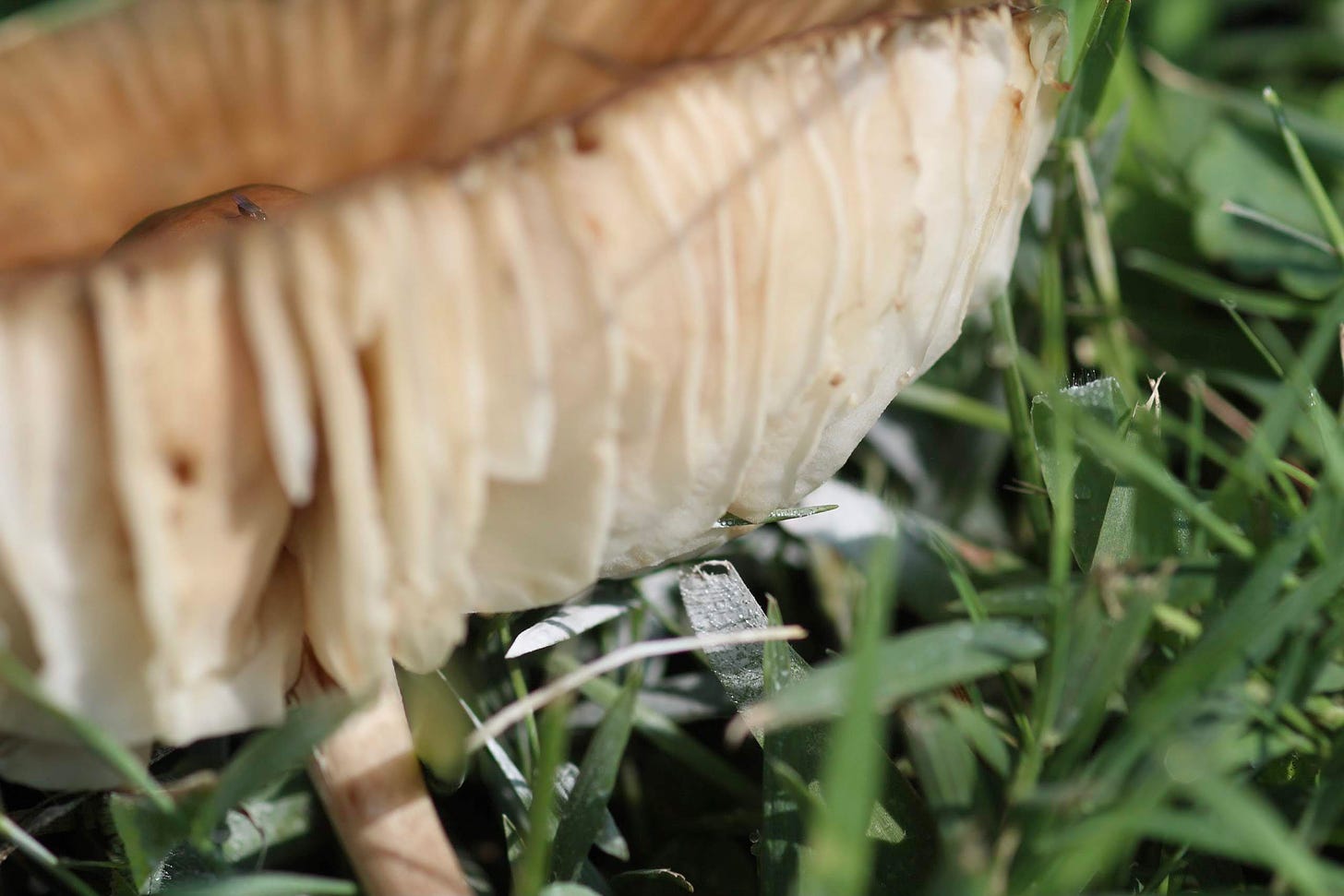
Powdery white spores on the wet grass help identify this mushroom
So let's take my little brown lawn mushroom. I know a lot about it at first glance: it's living in a lawn environment, not woods. It's got a cap, with a stem underneath. Also, it has free gills (not attached, or branching), and no annulus on the stipe (stem). It releases white spores, so by looking up fairy ring mushrooms, I can narrow the field down to a few, and using these known characteristics, I can safely say that it is Marasmius oreades. Which is edible, cool!
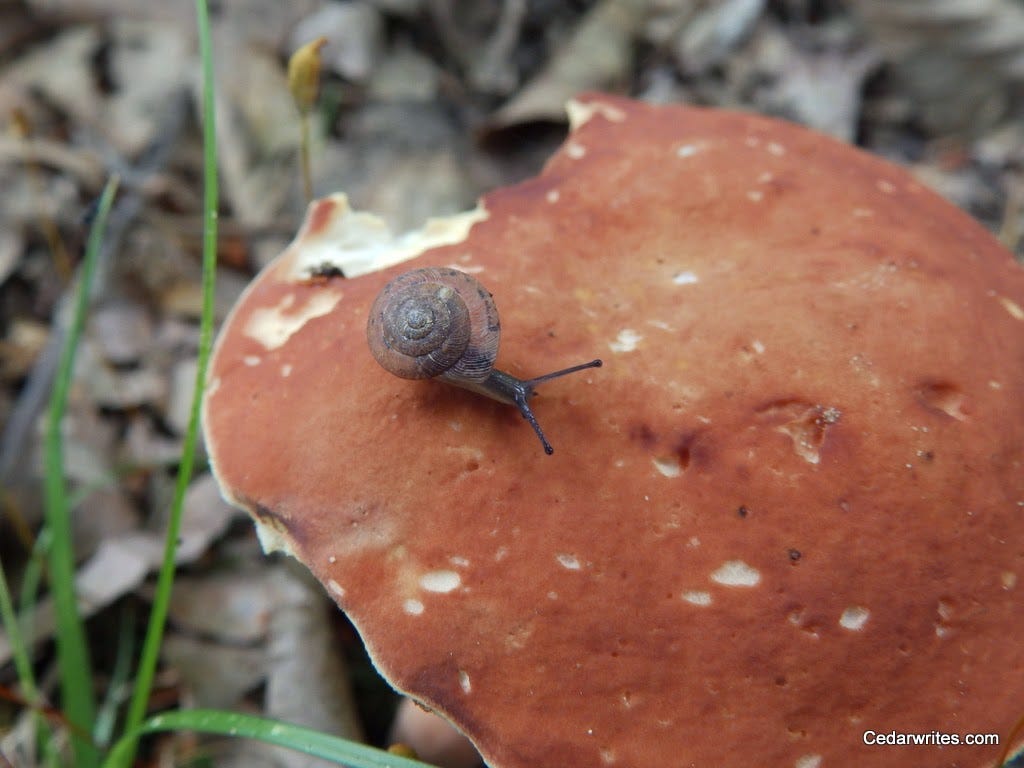
Translucent snail on mushroom
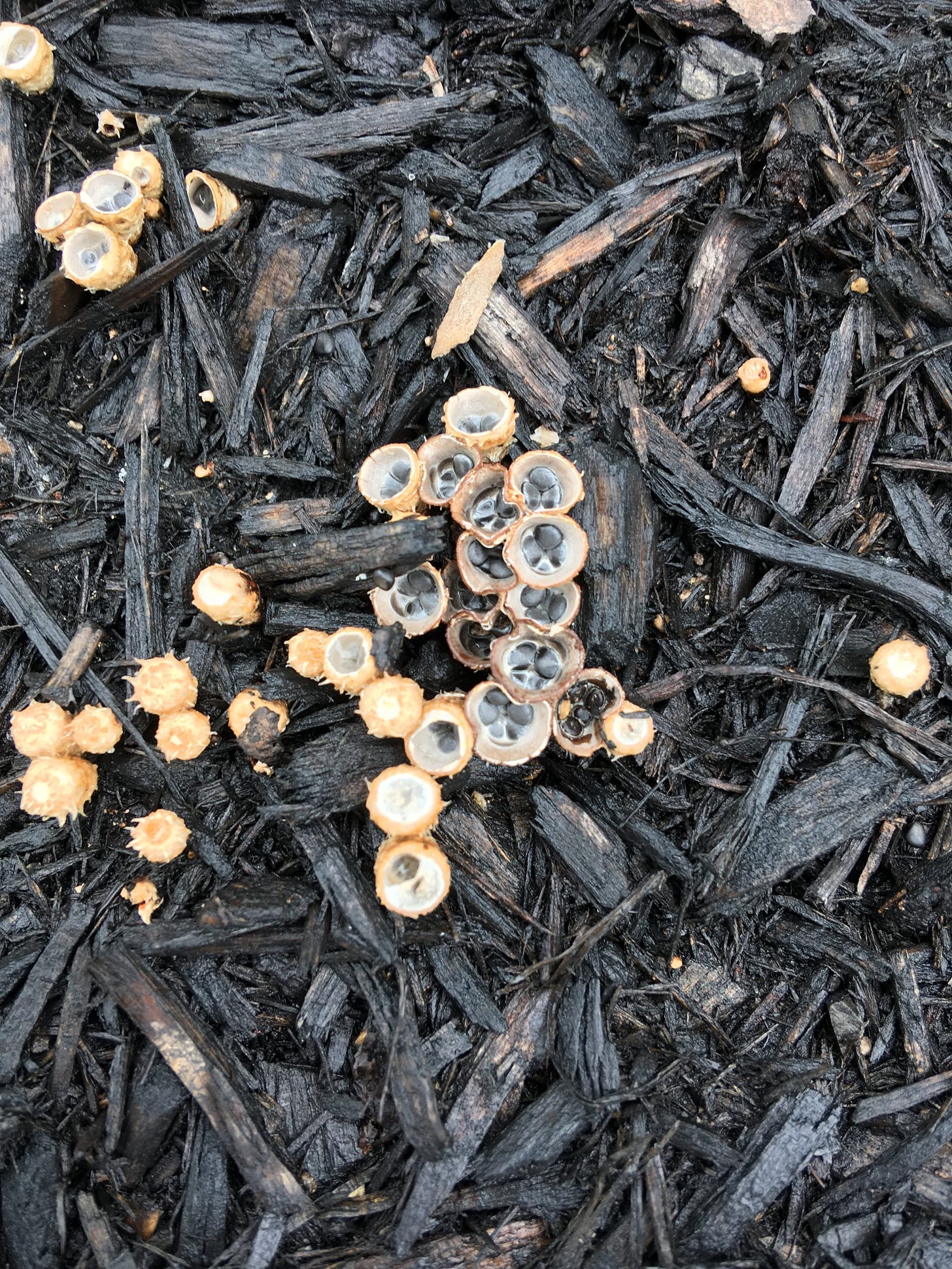
Bird Nest Mushrooms are tiny, but worth getting close to
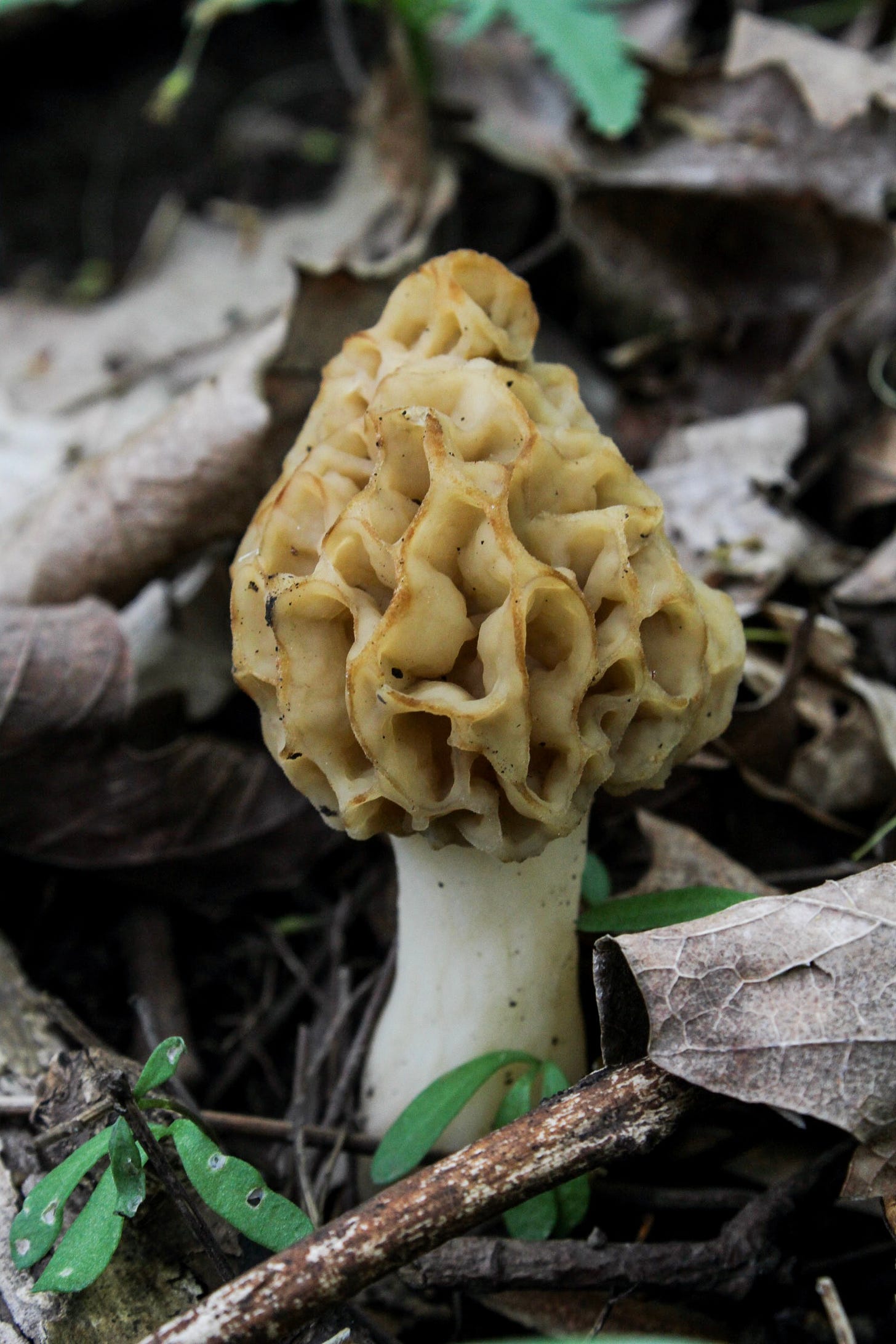
The elusive morel
Header image: "Hide and Seek' pen and ink drawing by Cedar Sanderson
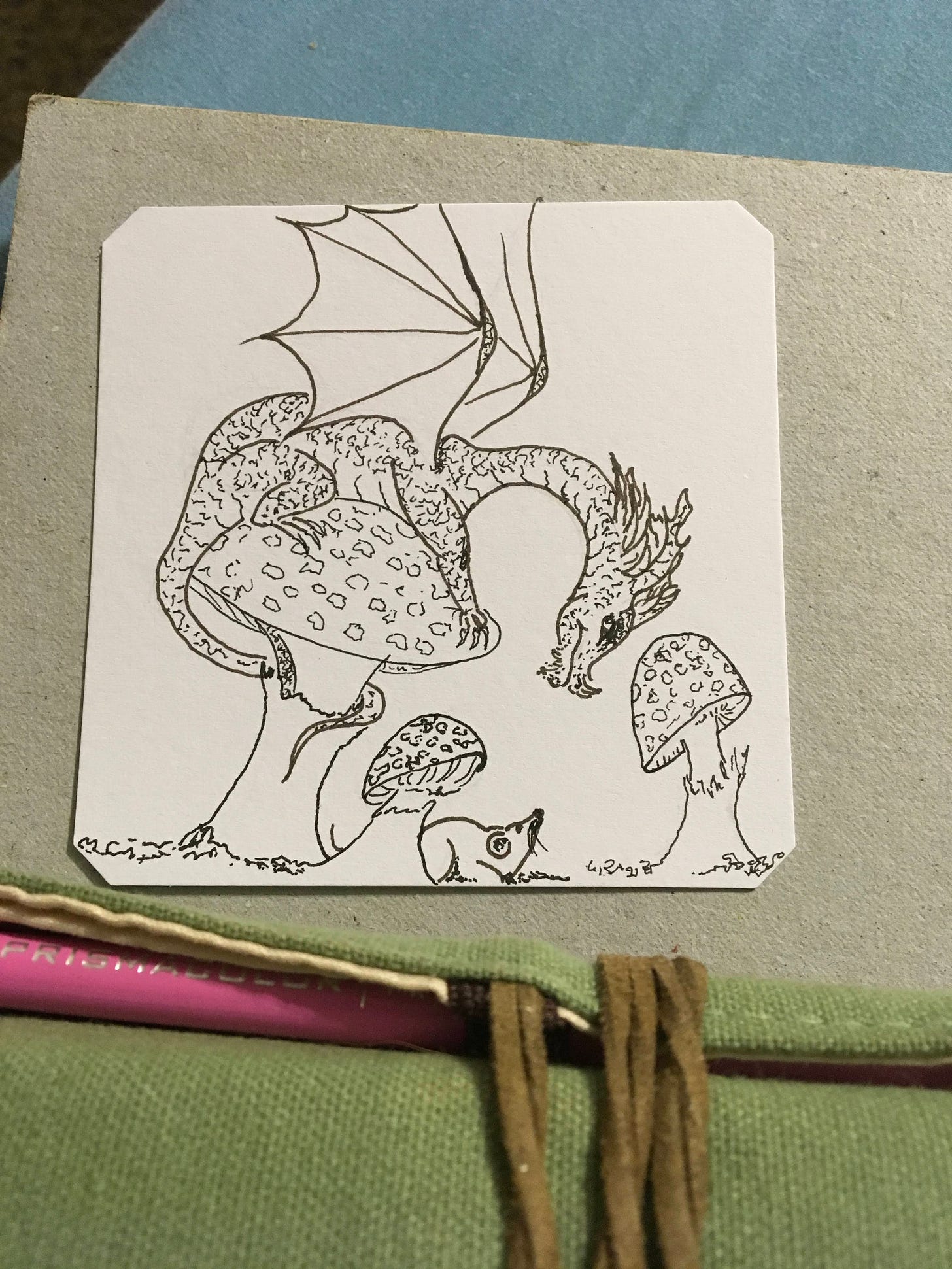
I tend to draw Amanitas, because they are so easy to recognize, being the iconic toadstool and poisonous mushroom.




